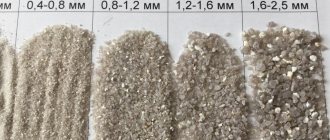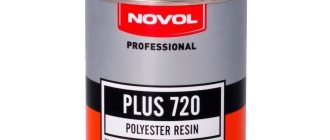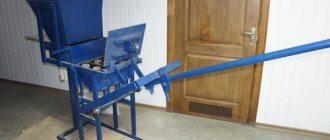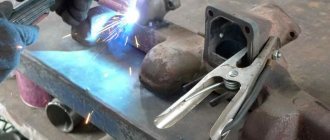Many Stone Age societies around the world used natural glass, such as the volcanic obsidian glass, to make sharp cutting tools. However, according to archaeological evidence, the first true glass was created in coastal northern Syria, Mesopotamia or Egypt.
The history of the earliest known glassware can be traced back to at least 2000 BC. For example, beads were created during the production of earthenware, a glassy material.
Since then, the glass making process has changed greatly. Advances in materials science and manufacturing technology have made it possible to produce glass with special reflective, refractive, and transmitting properties that can be used in prisms, optical lenses, and optoelectronic materials.
Today, glass is produced using two main technologies: the float glass process (also known as flow glass), which involves floating molten glass on a layer of molten metal, and glass blowing, which blows molten glass into a bubble.
Molten glass is made by heating ordinary sand (mostly containing silica) at very high temperatures until it melts and turns into a liquid. When sand cools, it does not return to its original state. Instead, it becomes an amorphous solid, a non-crystalline solid in which the atoms and molecules are not organized into a specific lattice structure.
Let's dig deeper and find out what materials and processes are involved in both methods, and what the future holds for them.
How to make glass from sand
Most likely, you know that sand is needed to make glass, and indeed, it is the most important ingredient. To make a glass product transparent, quartz sand without metal impurities is used, which gives the material colored shades.
To make glass you will need siliceous sand, otherwise called quartz.
Since quartz sand has a melting point of 2300⁰C, components are needed that will help reduce it in order to make the manufacturing process easier and more affordable. Such an ingredient was sodium carbonate or ordinary soda ash, thanks to which the smelting temperature was reduced by almost half.
Baking soda (sodium carbonate) lowers the temperature required to produce glass sheets.
Soda makes glass water-permeable, which makes it impractical in everyday life and in production. To give the material strength, calcium oxide or lime is added to the alloy. Additionally, the composition may contain magnesium or aluminum oxides for maximum resistance to physical and chemical factors.
To produce thin decorative glass, such as crystal, lead oxide is used as an additive, which gives the products shine and fragility. Lanthanum oxide is commonly present in eyeglass lenses due to its ability to refract light rays.
The most commonly used additive in the production of decorative glass is lead oxide, which adds shine.
Sapphire glass for glasses is made with the addition of aluminum oxide, which makes it maximum hard and resistant to physical damage. To make colored glass, iron oxide is added to the alloy to produce red, nickel for brown and purple tints, copper and chromium for green, cobalt for blue and other metals.
In production, glass is made in several stages: first, the key components are melted together in a furnace to form a homogeneous alloy, then sent to a container made of tin, which does not mix with the glass, maintaining its homogeneity. Already at this stage, the glass gradually cools, becomes smooth and thin.
To obtain a homogeneous mass, it is necessary to remove the bubbles - to obtain this effect, glassmakers constantly stir until the molten glass mass thickens.
The alloy cools completely when moving along a conveyor, the length of which can reach 100 m; this is necessary to prevent the formation of excess pressure inside the alloy, which can lead to future defects. After the conveyor, the glass is further processed to create various products.
Glasses differ only in the constituent material used for manufacturing. But the process itself is almost the same.
Environmental impact
The main environmental impact of glass production is due to the melting processes that release various gases into the atmosphere. For example, burning fuel or natural gas and decomposing raw materials results in the release of carbon dioxide.
Likewise, the decomposition of sulfates in batch materials produces sulfur dioxide, which promotes acidification. When nitrogen compounds decompose, nitrogen oxides are released, which contributes to acidification and the formation of smog. In addition, when raw materials and molten components evaporate, tons of particles are released into the atmosphere.
Other factors, such as emissions of volatile organic compounds and the generation of solid waste during production, also cause environmental problems.
However, recycled glass can solve many of these problems. It can be processed several times without significant loss of quality. Every 1,000 tons of glass recycled can result in a 300 ton reduction in carbon dioxide emissions and 345,000 kWh of energy savings.
On a smaller scale, recycling one glass bottle can save enough energy to power a 20-watt LED light bulb for an hour.
Although both production technologies have improved significantly in terms of efficiency, further reductions in emissions of dust particles, carbon dioxide and sulfur dioxide are still the main environmental challenges in flat glass production.
How to make glass at home with your own hands
To make glass at home, you will need a special furnace that provides heating to high temperatures. At home, they use a muffle, electric or pot stove, as well as a charcoal roaster.
Special glasses can be melted in an electric, pot or muffle furnace.
The second option is simpler, but unsafe, since when heated to hypermaximum temperatures, the grill itself may melt. We will tell you how to cook glass in a special oven.
- Prepare a fireproof crucible (melting pot).
- Pour sand, soda and lime into the crucible, and impurities should occupy no more than 30% of the composition.
- Place the crucible in the oven and melt the composition at the highest possible temperature (1500-1700⁰C).
- Once the components are melted, pour the liquid alloy into the casting molds.
- The last stage is firing in a kiln cooled to 400-600⁰C. This will make the glass product hard and durable.
The crucible must withstand the exceptionally high temperature that is reached in the furnace.
This is how you can prepare glass at home if you have special equipment.
Important! When working, follow safety precautions: use a welding mask, heat-resistant gloves, and do not go close to the furnace.
Cooling and leveling the glass surface
The resulting mixture is poured into baths filled with molten tin. The density of the latter is less than the density of hot glass, so it spreads evenly throughout the bath. At the same time, it is cooled to a temperature of 600 degrees, because the temperature of tin is lower than the temperature of liquid glass. A large roller pulls out the soft glass and pushes it further.
How to melt glass at home
If you want to melt a glass product rather than weld it, then you can’t do without special equipment, because glass is not a fusible material.
The crucible should be such that it is not difficult to grasp it with metal tongs and rods.
There are two methods of melting: casting and bending. In the first case, special molds are filled with liquid glass alloy, and in the second case, the composition is melted to a thick, viscous state, and glassblowers work with it, giving the mass various shapes.
To melt bottles and other products at home, you will need a specially designed furnace.
Melting point of glass
The exact melting point depends on the presence of impurities in the composition. Ordinary transparent glass melts at 700-750⁰С, tableware – at 1200-1400⁰С, and quartz – 1650⁰С. In industrial production, the temperature is maintained in furnaces at 1600⁰С.
Quartz and sand without impurities transform into a glassy state at a temperature of 2300 degrees Celsius.
Using a Glass Melting Furnace
If you are interested in how to melt glass at home, then professional equipment will come in handy, namely a muffle furnace, whose design ensures heating to the highest possible temperatures. Today there are muffle furnaces that can heat up to 2000⁰C. By using these designs at home, you can easily make jewelry or other glass products by melting bottles or other glass containers into a completely new product.
A muffle furnace will help you produce glass at home.
Use casting molds, but they must be coated with a special compound so that the glass can be easily separated. Place the mold in such a way that the composition cannot flow beyond its boundaries. Place the products in the oven so that when melting, they flow directly into the molds. Heat the oven gradually to allow the mold to hold up. After finishing the casting process, lower the temperature to 500⁰C and leave it in the annealing oven.
Important! Keep children away from the equipment as this may pose a danger to life.
Now you know that you can make and melt glass even at home if you have the raw materials and special equipment at your disposal. The main thing is to follow safety precautions when working with high temperatures and carefully read the operating instructions for the muffle furnace, this way you will protect your health when experimenting with glass at home.
Market
The global glass manufacturing market was valued at $127 billion in 2022 and is projected to grow at a rate of 4.1% between 2022 and 2027.
The main factors that can drive the market growth are the ever-increasing demand for consumer electronics and the penetration of artificial intelligence in consumer and business applications.
Flat glass is expected to play a key role in architectural designs over the coming year.
A recent trend sees a rapid transition in building architecture that maximizes natural daylight through the integration of flat glass into roofs and facades. Because triple silver insulated flat low-e glass offers significant energy savings, it can be widely used in green buildings around the world. Solar flat glass is also likely to grow significantly in the next few years.
China is currently the world's leading exporter of glass and glass products, accounting for more than 23% of global glass and glass products exports, valued at approximately $18 billion. Germany and the USA account for approximately 9% and 7% of global glass exports.
Types of mirrors
All mirror canvases are usually divided into two categories:
- with a functional purpose;
- decorative plan, which are usually used exclusively to improve the design.
| Functional | They are used so that a person can look in them while controlling his appearance. They are installed in visible and easily accessible places: bathrooms, hallways. There are cases when living rooms are equipped with mirrors to make them look larger visually. |
| Decorative | They don't look like people. They are intended to become a decoration of the room. |
There are many types of mirrors, and there is no shortage of choice. It all depends on individual preferences, the size of the premises, and financial capabilities. Today, retail outlets can offer the following unusual types of mirrors:
- mirrors patinated look (made in antique style). In this case, special chemicals are used;
- mirrors beveled (having beveled edges, most often in the form of diamonds);
- mirrors tinted or colored (look great in modern interiors);
- mirrors with ornaments, patterns, drawings and all kinds of inscriptions.
Manufacturing of triplex
The production of triplex is based on the creation of a multilayer structure consisting of two or more glasses, as well as polymer films that are located between them. For the manufacture of these products, both silicate and organic glasses can be used. The number of layers, their thickness and type of material are usually selected depending on the specific task. Currently, there are 4 types of films and several technological methods available that allow solving various problems. Before connecting, all structural elements must be thoroughly cleaned and degreased. If these conditions are not met, adhesion deteriorates, and remaining particles of dust and debris are visible.
Quality Standards
There are a huge number of types of glass. To determine the quality of each type, state standards have been created, which describe the properties and quality characteristics.
There are GOST standards for quartz, sheet, medical, multilayer, curved, inorganic, optical and other types of glass. They describe production technologies, brands, methods for determining quality, and classification.
What are the advantages of glass tiles over other types of coatings?
Advantages of walls lined with glass tiles:
- A small room seems bigger
- A darkened room appears brighter
- A room where a low ceiling will seem higher
- Due to the waterproofness of the tiles, the room is not afraid of dampness
- Walls covered with glass tiles can be washed with cleaning solutions containing chemical and alkaline substances
- Walls where glass tiles are glued are durable and not afraid of sunlight
Disadvantages of glass tiles:
- A wall with glass tiles cannot be cleaned with abrasive powders.
- Glass tiles are quite fragile and should not be hit with sharp objects.
- Glass tiles are quite heavy, so when gluing them you need a high-quality frame
Advantages of handmade glass tiles:
- Environmentally friendly - you know what you're putting in it
- Durable
- Large selection of colors
- You can pour the shape you like and the size
DIY glass tile kitchen apron











